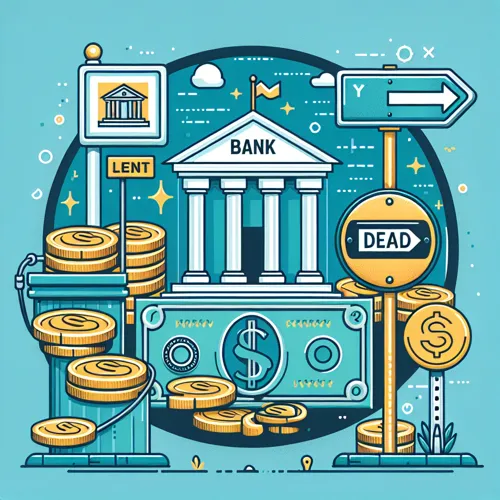Fractional Reserve Banking
Fractional Reserve Banking, a banking practice where a portion of depositors’ money is reserved while the remaining sum can be loaned out or invested. It serves as the bedrock for modern financial systems, but has also garnered criticism due to its potential implications on economic stability and systemic risk. In this blog post, we will delve into why fractional reserve banking might be considered a dead-end street, explaining the concept for beginners, followed by 5 main points elaborating upon this premise.
Origin of Fractional Reserve Banking
The history of fractional reserve banking can be traced back to the Tally Sticks used by medieval England, serving as early tokens of debt. It was later introduced in the form of banknotes as a substitute for precious metals and expanded further with the emergence of credit cards and digital money. Today, it’s an essential part of our financial system that enables the creation of new money through loans and investments.
How Does It Work?
Under fractional reserve banking, commercial banks hold only a fraction of their customers’ deposits while loaning out or investing the remaining funds. The idea behind this practice is to maximize profit by putting more money into productive activities like investments, lending, etc., thus generating economic growth and prosperity. However, this system relies heavily on trust and faith that those loans will be repaid in full.
Systemic Risk and Instability
The primary concern associated with fractional reserve banking is the potential for financial crises due to loan defaults or bank failures. When a significant number of banks fail simultaneously, they cannot cover all customer deposits leading to panic withdrawals. This can spark a domino effect, causing more banks to fail in quick succession, exacerbating the problem further - a phenomenon known as “bank run.”
Hyperinflation Risks
Excessive lending through fractional reserve banking has been blamed for hyperinflation episodes in countries like Zimbabwe and Venezuela. When banks loan out more than they should, the increase in circulating money supply leads to higher prices, ultimately culminating in extreme inflation levels. Central banks need to constantly monitor the money supply to maintain stability and prevent hyperinflation.
Monetary Policy Challenges
Implementing monetary policy becomes challenging when dealing with fractional reserve banking systems because central banks cannot directly control all the money supply within the economy. Banks can create more loans, thus expanding the overall money supply beyond what’s intended or regulated by the government, thereby complicating attempts to stimulate or slow down economic growth through interest rate changes or bond purchases.
Regulatory Concerns
Regulating banks under a fractional reserve system has proven difficult over time due to its inherent risks and complexities. Governments have introduced various regulations and safety measures such as deposit insurance, reserve requirements, and stress tests, aimed at minimizing the likelihood of bank failures. Still, these measures may not be sufficient in preventing future crises.
And now?
In conclusion, while fractional reserve banking serves as an indispensable pillar of our financial systems by allowing for economic growth through credit creation, its potential pitfalls such as systemic risk, hyperinflation risks, and complexities associated with implementing effective monetary policy warrant further exploration and debate. As such, understanding the underlying principles behind fractional reserve banking is crucial for making informed decisions about our money and how it works within today’s modern economies
